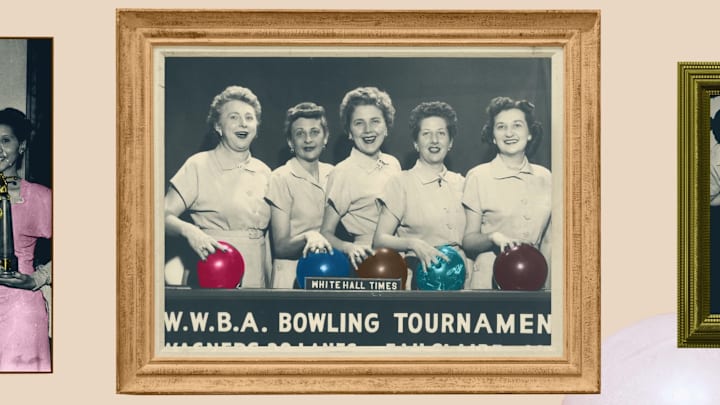In 6th grade, my school mandated that one Friday a month be dedicated to Club Day. There was an array of clubs you could choose from (I went to the Film Club, naturally). However, membership in one of those spaces was required. Most just used it as an opportunity to get on their phones for an hour a week. By the time I was in 8th grade, Club Day had faded into an obscure relic. I’d rarely think about it in the ensuing 15 years. The new documentary Join or Die, though, underscored the thought put into Club Day’s creation. More likely than not, it was a response to a social crisis in America.
For decades, Robert Putman has been talking about the decline in active participation in clubs or organizations in America. As chronicled in books like the late 1990s text Bowling Alone, around the 1970s, membership in American clubs dropped precipitously. That decline has progressively become more severe over the following decades. In Putnam’s eyes, this club membership decrease ties into a larger sense of isolation among Americans. How can we develop a sense of community if we do not have opportunities to mingle with our neighbors?
Directors Pete and Rebecca Davis (the former of whom was both a student of Putnam’s and functions as this film’s narrator) don’t just explore Putnam’s theory in Join or Die. They also explore how the dwindling presence of “social capital” between people has led to modern systemic rot. In the more than 20 years since Bowling Alone's publication, the “social capital” issue has only worsened. Putnam sounded the alarm bells. How can we respond?
“I need connection in my life” is one of the first phrases uttered in Join or Die. It’s an urgent collection of words emerging from the mouth of one of many everyday Americans chronicled in this feature. It’s also a statement underscoring the personal stakes of Putnam’s writing. We may not always know how to achieve it, but humans gain so much from communal experiences. The virtues of clubs don't just manifest on an individual level in this documentary.
As Join or Die's various talking-head interview subjects gently explain, vintage clubs often elevated marginalized voices. Oppressed groups could come together and work for societal change. Unions are an especially important manifestation of clubs that the filmmakers and Putnam keep returning to. We all need those kinds of environments where we feel accepted and not just defined through work, monetary goals, and other capitalistic elements.
These core ideas often appear through wacky flourishes, such as loud “DINGS” when important words come on-screen. Chief among these accentuations are recurring animated segments with imagery resembling collages of magazine clippings. Extended bursts of Putnam’s narrated exposition are accompanied with lively visuals from director Mark Lopez. Such cutaways exist to keep Join or Die from being too dry as Putnam explores topics like his experiences charting societal stability in Southern Italy in the 70s. Despite commendable work from Lopez and his team, such animated segments often make Join or Die feel too busy for its own good. In trying to keep viewers from feeling bored, Pete and Rebecca Davis instead make certain sequences too unwieldy.
Those animated segments occupy a production that’s ultimately a straightforward exercise. Join or Die is an introductory exercise ingratiating newcomers to Bowling Alone’s core ideas. On those terms, the feature is perfectly cromulent (as a Simpsons character might say). Putnam’s tangible passion for this material is endearing and keeps the 93-minute runtime moving at a nice clip. Best of all interview segments with people from all over America talking about joining social spaces helped them personally. These anecdotes are rife with compelling idiosyncratic backdrops. These included everything from a biking club started in Atlanta, Georgia to meetings between trade union leaders.
In these sequences, Join or Die simultaneously delivers engrossing everyday stories and emphasizes the endless manifestations of connecting with others. Best of all, Pete and Rebecca Davis capture these events largely in fly-on-the-wall video footage rather than just sitting people down for interviews. Such sequences are accompanied by voice-over narration where folks explain their personal lives and motivations for starting a club. However, the images filling the screen are just rudimentary existences. We see people walking to and from work, helping their kids with bicycles, or putting together signs for protests. There’s an immersive quality to just letting routine actions speak for themselves. It’s like viewers get to watch the positive effects of communal spaces in real time!
Other portions of Join or Die, namely interview segments with leading American political figures (including Hillary Clinton and Pete Buttigieg) are more conventionally filmed. Meanwhile, the entire documentary, likely as a byproduct of its “introductory” status, is ultimately too surface-level for its own good. For starters, there’s a strange exclusion of LGBTQIA+ material in the documentary. This is “clubs” and communal spaces being an integral part of that community’s history. By contrast, the feature emphasizes the importance of social spaces from the point-of-view of church leaders or guys with massive American flags in their garages.
This detail speaks to Join or Die’s very boilerplate political perspective. In trying to placate everyone (including offering screentime to Republican Utah senator Mike Lee), Join or Die loses its gumption. How can you be a successful documentary crusading for change when your very form restricts you from getting too subversive? Join or Die can’t come close to the artistic heights of Barbara Kopple, Alex Gibney, or Garrett Bradley (to name a few) documentaries because it’s too afraid of alienating anyone. Even if it’s frustratingly surface-level, Join or Die has its fair share of commendable moments, especially when it focuses on working-class subjects. If nothing else, it made me finally appreciate Club Day…who knew that would ever be possible!
